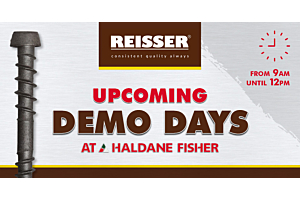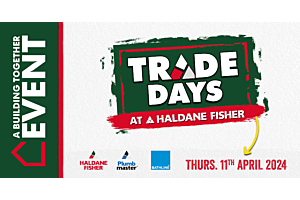Choosing the right screws, nails, fixings, and adhesives can often be where a home improvement project falls down - quite literally! It’s an important place to start, as without getting these bits right, whatever you’re trying to affix or hang will not last long. If you struggle with selecting the right nails, screws, adhesives and fixings for your DIY jobs, this is the guide for you.
Choosing the right screw for the job can be a daunting task, as there is a wide range of choice out there. Not so bad if you’re in a shop and can ask for guidance from a human, but if shopping online, you want to have an idea before you buy.
Material
Step one in identifying the type of screw you need, is identifying the material you want to screw into. A simple wood screw or masonry screw is easy enough, but the choices get a bit more confusing when you venture into materials such as MDF. This is where online shopping comes into its own, as you can search for a “[insert material here] screw” e.g. “drywall screws” or “sheet metal screws”.
Our Perry No.6012 Decking Screw is a great example of a specialist screw. These not only come in a range of screw sizes, but are sold in packs of 200 and have a Pozi driver bit included, giving the newcomer some clues as to how these are installed and how many you should need for a standard job.
Screw features
If your search doesn’t whittle the options down sufficiently, it’s time to consider the key differentiating physical features of a screw - namely, the head, thread and tip. The thread refers to the ridges along the screw shaft. These ridges not only perform the key gripping action of the screw, they also determine how fast you’ll be driving the screw into your chosen material.
The screw head is where you apply the force of your screwdriver, and it’s also the part of the screw that stops on the material you’re screwing into. A countersunk head is shaped in such a way that it sits flush with your material surface. A raised head will be shaped so that it is partly driven into the material’s surface, but part of it sits above the surface. A rounded head is shaped with a flat bottom surface, so that none of the head is driven into the material’s surface. If the head has a ‘cross’ shape on it, you will need to use a Phillips screwdriver, while a line on the head indicates the use of a flat head screwdriver.
As a general rule, the tip is the ‘pointy’ bit, the part of the screw that first makes contact with your material.
Screw size
The right size of screw is described by two measurements: the length of the screw and the screw gauge. The gauge of a screw refers to the diameter of the unthreaded part of the screw known as the shank.
A lot of the decisions here are governed by common sense; don’t choose a screw so big it is likely to split or splinter the material you are working with. If it’s a narrow piece of material, pay attention to the length of the screw.
Gauge numbers can be confusing as they often come in both metric and imperial measurements. Thankfully, a quick conversion is only a Google away if you are shopping online.
Pilot holes will be useful if you are drilling two pieces of wood together. This means drilling a small hole which you will then screw into. As a general rule, the drill bit you use should be the same size as the body or the shaft of the screw - not including its threads.
Other more specialised fixtures and adhesives should be easier to whittle down. For example, on the Key Hardware online shop, we break down the options into four broad categories: Screws; Fixings and Fasteners; Nuts, Bolts and Washers; Nails. These categories reflect the general usage for these items and help you to hone in on the right item for your job. They are illustrated with clear pictures to provide further signposting.
It can be frustrating to keep hearing the phrase “use your common sense” but with DIY, it’s often the best way to find the right tool or bit for the job. For example, if you want to bond two thick pieces of wood to use outdoors, you’ll probably use a screw rather than wood glue, as the latter wouldn’t hold them together properly. If you’re repairing a small wooden picture frame, you’ll use the wood glue as a screw would split the frame.
Adhesives are a bit more intuitive to navigate for the novice DIY-er, with pretty clear demarcation between the different options. On our web shop, we have multi-purpose grab adhesives favoured by such as the popular Everbuild Pink Grip, clearly separated from simply high strength adhesives, used for more everyday or household adhesive tasks for which a strong bond is needed. “Tile adhesives and grout” and “wood adhesives and glue” are self-explanatory, with our website further broken down into sub-categories to help any DIY enthusiast or home improvement professional to quickly find the right product.





